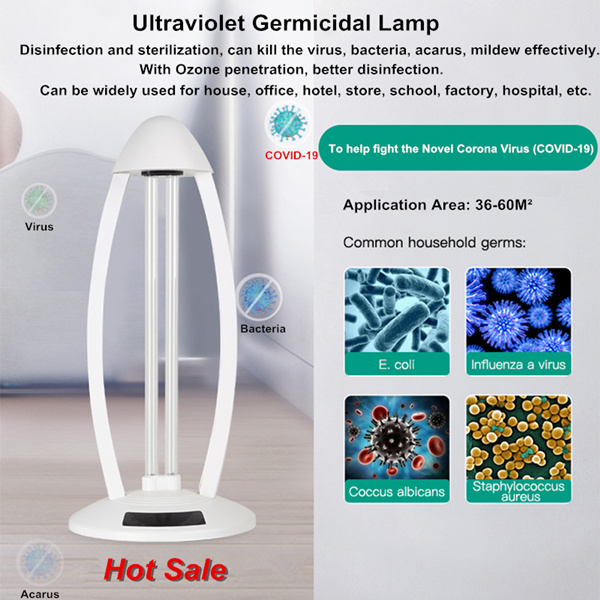News
News
Ultraviolet Germicidal Lamp
Time:[2020-5-1] Views:2265
The ultraviolet germicidal lamp is a special type of lamp
that produces ultraviolet C (UVC) light. This short-wave ultraviolet light disrupts DNA base pairing, causing formation of pyrimidine dimers, and leads to
the inactivation of bacteria, viruses, and protozoa. It can also be used to
produce ozone for water disinfection.
There are three common types available:
1. Low-pressure lamp
2. High-pressure lamp
3. LED
Uses
Germicidal lamps are used to sterilize workspaces and tools used in biology laboratories and medical facilities. If the quartz envelope transmits wavelengths shorter than 253.7 nm, they can also be used wherever ozone is desired, for example, in the sanitizing systems of hot tubs and aquariums. They are also used by geologists to provoke fluorescence in mineral samples, aiding in their identification. In this application, the light produced by the lamp is usually filtered to remove as much visible light as possible, leaving just the UV light. Germicidal lamps are also used in waste water treatment in order to kill microorganisms.
The light produced by germicidal lamps is also used to erase EPROMs; the ultraviolet photons are sufficiently energetic to allow the electrons trapped on the transistors' floating gates to tunnel through the gate insulation, eventually removing the stored charge that represents binary ones and zeroes.
Ozone Production
For most purposes, ozone production would be a detrimental side effect of lamp operation. To prevent this, most germicidal lamps are treated to absorb the 185 nm mercury emission line (which is the longest wavelength of mercury light which will ionize oxygen).
In some cases (such as water sanitization), ozone production is precisely the point. This requires specialized lamps which do not have the surface treatment.
Safety Concerns
Short-wave UV light is harmful to humans. In addition to causing sunburn and (over time) skin cancer, this light can produce extremely painful inflammation of the cornea of the eye, which may lead to temporary or permanent vision impairment. For this reason, the light produced by a germicidal lamp must be carefully shielded against direct viewing, with consideration of reflections and dispersed light. A February 2017 risk analysis of UVC lights concluded that ultraviolet light from these lamps can cause skin and eye problems.




